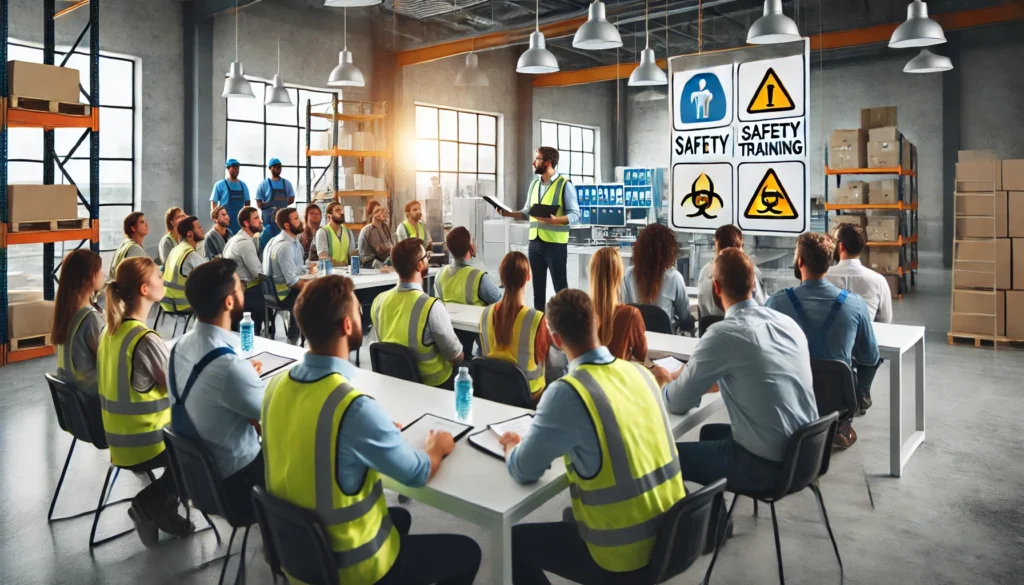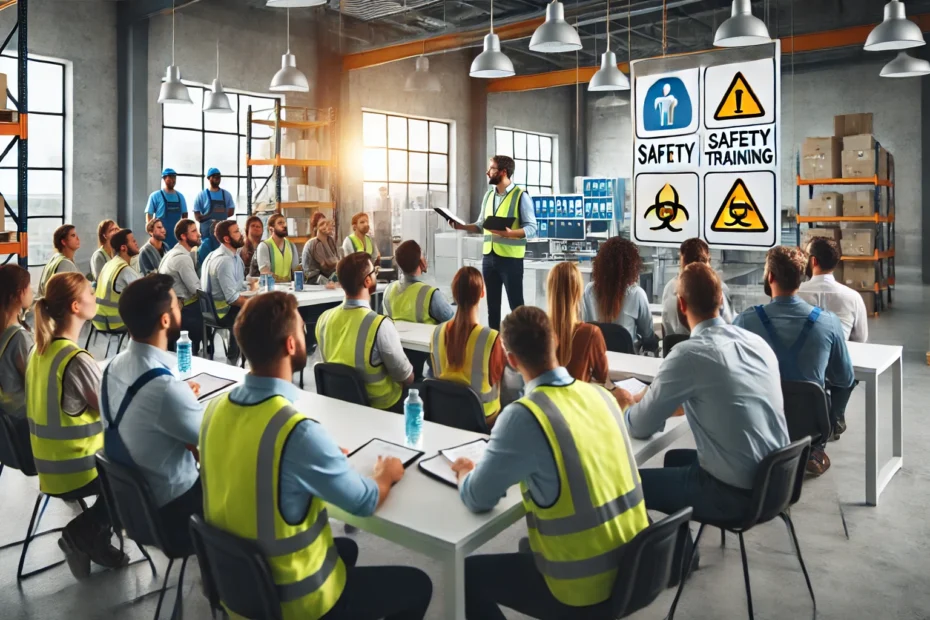In today’s fast-paced world, workplace safety isn’t just a matter of following the rules—it’s about creating a culture of care and awareness. Whether you’re running a small café or managing a large industrial facility, safety should always be a top priority. But here’s the kicker: just having rules isn’t enough. Safety education and training are the keys to making those rules stick, keeping everyone safe, and fostering a proactive, positive workplace.

So, how do you make safety training not only effective but engaging? Let’s dive into the world of safety education, covering essential certifications like IOSH Managing Safely, OSHA Certification, and IEMA Certificates, and how they can transform your safety approach.
Why Safety Education and Training Matter
Before jumping into certifications and courses, let’s understand why safety education and training are so critical. It’s not just about ticking boxes; it’s about preventing accidents, saving lives, and reducing costly downtime. A well-trained workforce is less likely to make mistakes, more likely to spot hazards, and better equipped to handle emergencies. Plus, it boosts morale when employees feel they are in a safe and well-cared-for environment.
Think of safety training as the foundation for building a culture of responsibility and awareness. This culture doesn’t just make compliance easier—it makes safety personal, and everyone in the company takes it seriously.
What is IOSH Managing Safely?
The IOSH Managing Safely course is a globally recognized certification that provides managers with the knowledge they need to ensure workplace safety. Developed by the Institute of Occupational Safety and Health (IOSH), this course is designed to teach those in charge of teams how to manage health and safety effectively.
This course isn’t just for safety officers—it’s aimed at anyone in a managerial position, helping them to recognize risks, perform basic risk assessments, and implement safety measures in their day-to-day operations. It’s ideal for people with no prior safety experience but who are responsible for staff welfare.
Here’s what the course covers:
- Understanding Health and Safety Responsibilities: It goes beyond theory by focusing on practical application and giving managers the tools to take charge of their team’s safety.
- Risk Assessment: How to spot hazards, assess risks, and develop strategies to eliminate or minimize those risks.
- Legal Requirements: What you need to know about laws and regulations that govern workplace safety.
- Safety Management: How to create a safety plan, monitor its effectiveness, and get the team to buy in.
After completing the IOSH Managing Safely course, managers are better equipped to create a safer, healthier work environment. This helps to reduce workplace injuries, improve productivity, and even avoid costly legal troubles.
Understanding OSHA Certification
Next up is OSHA Certification—a key player in workplace safety, particularly in the United States. OSHA, which stands for the Occupational Safety and Health Administration, is a government body that sets and enforces standards for workplace safety. Getting certified in OSHA is a game-changer for businesses because it ensures your staff is up-to-date with OSHA’s rigorous standards.
OSHA offers several types of certifications, but the most common are the OSHA 10-Hour and OSHA 30-Hour certifications. These are designed for different levels of employees:
- OSHA 10-Hour: This certification is ideal for entry-level workers who need to understand basic workplace safety practices. It covers topics such as fire safety, electrical hazards, and personal protective equipment (PPE).
- OSHA 30-Hour: Aimed at supervisors or managers, this certification dives deeper into workplace safety practices, including hazard identification, compliance with OSHA standards, and creating safety programs.
OSHA Certification is a smart investment for businesses as it not only helps prevent accidents but also demonstrates a commitment to a safe workplace. It’s also vital for maintaining compliance with federal regulations, ensuring that your business doesn’t face fines or legal consequences.
The Power of the IEMA Certificate
Now, let’s talk about the IEMA Certificate, a certification offered by the Institute of Environmental Management and Assessment. While this one leans more toward environmental safety, it plays a crucial role in ensuring that your company isn’t just safe from physical hazards but also from environmental risks.
The IEMA Certificate is essential for anyone working in environmental management, sustainability, or health and safety roles. This certification equips professionals with the knowledge to assess, manage, and reduce environmental risks in the workplace.
Key areas covered by the IEMA Certificate include:
- Environmental Regulations: Understanding the environmental laws that apply to your workplace and how to stay compliant.
- Risk Management: Learning how to identify environmental hazards and create strategies to reduce them.
- Sustainability: How to make your business operations more sustainable, from reducing waste to managing resources responsibly.
- Environmental Management Systems: How to create and implement systems to monitor and improve environmental performance.
The IEMA Certificate is particularly valuable for businesses looking to improve their environmental impact and reduce their carbon footprint. Not only is it great for the planet, but it also helps companies stay ahead of regulations and attract customers who value sustainability.
How to Choose the Right Safety Certification for Your Business
Selecting the right safety education and training for your business depends on several factors, including the size of your company, the industry you operate in, and the specific safety challenges you face. Here’s a breakdown of when you might need each certification:
- IOSH Managing Safely: Perfect for managers in any industry who need to ensure their team’s safety. This course is particularly valuable in sectors like construction, manufacturing, and hospitality.
- OSHA Certification: Essential for businesses in industries like construction, manufacturing, and healthcare, especially if you’re in the United States. If your workplace deals with physical hazards or requires strict adherence to OSHA standards, this certification is a must.
- IEMA Certificate: Ideal for businesses that want to make environmental sustainability a priority. It’s great for companies in the energy, manufacturing, or environmental sectors that deal with environmental hazards.
Each certification offers a unique benefit, but they all share one thing in common: they help create safer, more sustainable workplaces. And in today’s competitive job market, having certified safety professionals on your team can give your company an edge.
The Bottom Line: Invest in Safety Training Today
Safety education and training are not just a legal requirement—they are an investment in your business’s future. From IOSH Managing Safely to OSHA Certification and the IEMA Certificate, these certifications provide your workforce with the tools they need to protect themselves, their colleagues, and the environment.
When you make safety a priority, it becomes part of your company’s DNA. Employees are happier, more productive, and confident in their work environment. Customers notice too—after all, a company that invests in safety is one that cares about its people and its reputation.
Ready to take your safety game to the next level? Whether you’re a manager looking to earn your IOSH Managing Safely certification or a company aiming for OSHA Certification, now’s the time to invest in your workforce. Start exploring the options today, and build a safer, more sustainable future for your business.
Stay safe, stay smart, and watch your business thrive!
